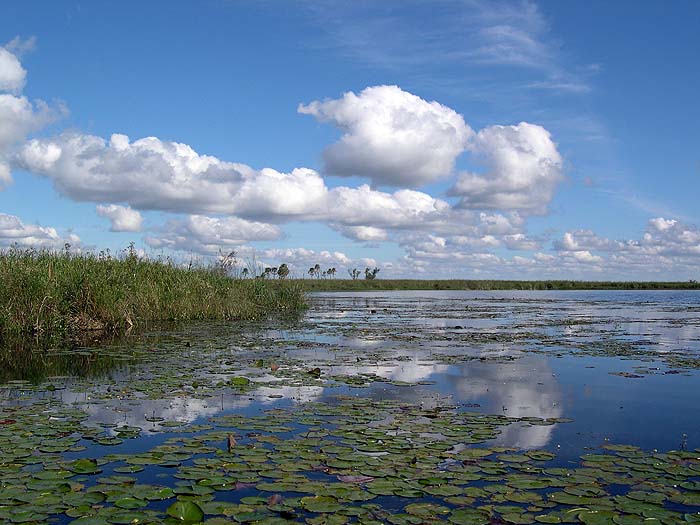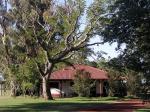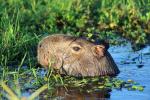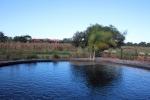In April I was invited to attend a trade show in Buenos Aires and, going all that way, it made sense to extend my trip. The majority of my time was spent in the Esteros del Iberá (from the guaraní word meaning 'brilliant waters'), a vast area of wetlands in the Corrientes province of north-eastern Argentina, home to an incredible array of bird and wildlife and somewhere I was keen to see first-hand. Iberá is the second largest wetland in the world (after the Pantanal in Brazil), the 1.3 million hectares encompassing a mix of lagoons, marshlands, rivers, swamps, forests, dry grasslands, savannahs and floating islands.
Rincón del Socorro
Departing Buenos Aires on an overnight coach to Mercedes, I arrived at Rincón del Socorro in time for breakfast. The coach leaves Buenos Aires in the evening amd takes around 9 hours. The seats are wide and recline well, however, the air conditioning was a bit on the cool side for me (top tip: wear an extra layer!). From Mercedes it is then a couple of hours by road (half of which is paved) to the lodge. Taking the coach is arguably the best way to get there (asides from a charter flight), as the majority of the journey is paved and you arrive early so still have the whole day to enjoy activities.
Simply arriving at Rincón del Socorro lodge there is wildlife in abundance along the main drive! Originally a farm built in 1896, the lodge very much retains its original style with 6 large rooms along a shaded gallery plus additional separate houses in the gardens. I enjoyed a guided walk to a lake with a variety of bird species, deer, capybara and peccary; a walk through the gallery forest and a beautiful ride to the edge of a lagoon where we saw wild boar and spotted howler monkeys in the distance. I also spent an afternoon on a boat trip at the Iberá lagoon, around an hour away, again spotting wildlife including two species of caiman. On the way back at dusk we even spotted a crab eating fox and other wildlife.
In 2001, the philanthropist and conservationist Douglas Tompkins bought Rincón del Socorro (and other land in Iberá) to create an 74,131 acre natural reserve that would be handled by his foundation, The Conservation Land Trust (CLT). His aim was to create the greatest natural park in Argentina and concluded with the donation of lands for the creation of the Iberá National Park which, together with the provincial reserve, constitutes the Great Iberá Park. The foundation also initiated a 'Rewildling project', reintroducing locally extinct fauna to the area.
www.lastfrontiers.com/hotels/argentina/the-ibera-marshlands/rincondelsocorro
Learn more about their work in Argentina and Chile here: www.tompkinsconservation.org
Colonia Carlos Pellegrini
The small town of Colonia Carlos Pellegrini is around 1 hour north of Rincón del Socorro and is a great base for visitors wanting to be able to enjoy the town in the evening, soaking up a bit of the local culture and trying the regional cuisine. The town is the main base for boat trips on the Iberá lagoon and there are a number of lodges in the town. I stayed at the delightful Casa de Esteros, owned by Valeria and Leslie Cook who previously managed Rincón del Socorro for many years. Their lodge is very much a home from home - there are just 5 rooms, a cosy sitting room, quincho for BBQ's and a huge outdoor pool fed by the lagoon.
From Casa de Esteros I enjoyed another boat trip on the lagoon and also a kayaking excursion. I also had a guided walk along a couple of trails, spotting howler monkeys from one.
www.lastfrontiers.com/hotels/argentina/the-ibera-marshlands/casa-de-esteros
Puerto Valle
From Carlos Pellegrini it was a 4 hour transfer north to Puerto Valle. This is a dirt road all the way, some sections better than others but expect a very bumpy, very muddy journey!
Puerto Valle is on the Paraná river around 1 hour from the town of Posadas (where there is an airport). The main building is an old estancia dating back to 1886 and there are 4 rooms in this original section plus other rooms in the gardens, overlooking the river. I only had time for one excursion here - to the Valle lagoon for sunset. Other options include boat trips or kayaking on the Paraná river (when it's not too choppy), riding in the hotel grounds and also a visit to the tree nursery next door (the company that owns the hotel also owns many plantations).
www.lastfrontiers.com/hotels/argentina/the-ibera-marshlands/puerto-valle
Useful information
Go further - Iguazú: I did then continue my trip to Iguazú, around 4 hours away along a good, paved highway. It is also possible to visit some Jesuit missions en-route.
When to go: The area can be visited year-round but is extremely hot in the summer (January-March). The autumn months of April and May are a bit cooler and a good time for birdwatching. The spring season is also a good time but does experience more rain.
How to get there: (1) Take the overnight bus as I did. (2) Fly to Corrientes from where it is a paved road for around 4 hours and then a dirt road for around 1 hour to Rincón del Socorro (or an additional hour to Carlos Pellegrini). (3) Fly to Posadas from where it is around 45 minutes to Puerto Valle, 4½-5 hours to Carlos Pellegrini and an additional hour to Rincón del Socorro. (4) Rincón del Socorro also offers a private flight to a landing strip at the lodge itself.






